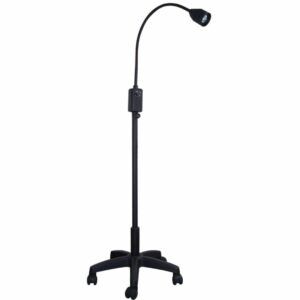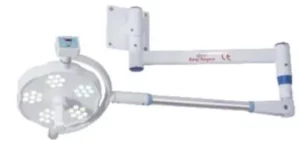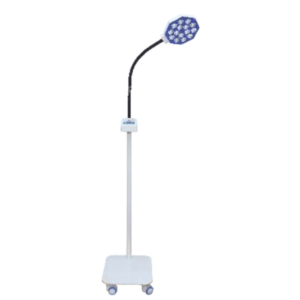In the realm of healthcare, lighting plays a pivotal role in ensuring accurate diagnoses, safe procedures, and patient comfort. This blog will shed light on the various types of Medical Examination Lights available in the market and their unique features. Whether you’re a medical professional looking to enhance your facility’s lighting or a curious reader seeking knowledge, this guide has something for everyone.
Understanding Medical Examination Lights
Medical examination lights are crucial tools used in healthcare settings to illuminate specific areas of a patient’s body during medical examinations, surgeries, or procedures. These lights are designed to provide bright, focused, and shadow-free illumination, enabling healthcare professionals to perform accurate and detailed examinations.
Types of Medical examination lights
Medical examination lights are crucial tools in healthcare settings, providing focused illumination for medical examinations, surgeries, and other procedures. There are various types of examination lights designed to meet specific needs. Here’s a brief overview of some common types:
- Halogen Examination Lights: Halogen bulbs produce bright, white light, making them suitable for various medical procedures. They offer good color rendering, allowing healthcare professionals to distinguish between different tissues accurately. Halogen lights are energy-efficient and have a longer lifespan compared to traditional incandescent bulbs.
- LED Examination Lights: Light Emitting Diode (LED) lights have become increasingly popular in medical settings. LED lights are energy-efficient, generate less heat, and have a longer lifespan than traditional bulbs. They often provide adjustable color temperature and intensity, allowing customization for specific medical tasks.
- Fluorescent Examination Lights: Fluorescent lights are known for their efficiency and cool operation. They are often used in large examination rooms or clinics where a broad, even illumination is required. However, they may not be as commonly used in smaller, specialized settings due to their size and designs.
- Adjustable Arm Examination Lights: These lights come with adjustable arms, allowing healthcare professionals to position the light source precisely where needed. They provide flexibility during examinations and medical procedures, enabling optimal visibility.
- Ceiling-Mounted Examination Lights: Ceiling-mounted lights are fixed to the ceiling, providing an unobstructed view and freeing up floor space. These lights are commonly used in operating rooms and surgical suites where a large, focused light source is necessary.
- Portable Examination Lights: Designed for mobility, portable examination lights are suitable for settings where the light needs to be moved between rooms or used in emergency situations. They often come with rechargeable batteries for added convenience.
- Magnifying Examination Lights: Some examination lights are integrated with magnifying lenses, enhancing the visibility of smaller details during examinations or procedures. These lights are commonly used in dermatology, ophthalmology, and other specialties where close inspection is crucial.
- Fiber Optic Examination Lights: These lights use fiber optic technology to deliver focused and intense illumination. Fiber optic lights are often used in conjunction with medical instruments, providing illumination at the point of contact.
When choosing a medical examination light, factors such as the type of medical procedures, room size, and specific lighting requirements should be considered to ensure optimal performance and patient care.
Key features of medical examination lights include
- Adjustability: These lights are often adjustable in terms of intensity, color temperature, and focus. This allows healthcare professionals to customize the lighting according to the specific needs of the examination or procedure.
- Mobility: Many examination lights are designed to be mobile, with features such as wheels or flexible arms that can be easily positioned to illuminate different areas of the patient’s body.
- Sterilization: In surgical settings, some lights are designed to withstand sterilization procedures to maintain a clean and hygienic environment.
- LED Technology: Modern medical examination lights often use LED (Light Emitting Diode) technology. LEDs provide a bright, white light that closely resembles natural daylight, and they are energy-efficient with a longer lifespan compared to traditional light sources.
- Color Rendering: Accurate color rendering is crucial in medical examinations, especially in areas like dermatology or surgery. High-quality lights ensure that healthcare professionals can accurately assess the color and condition of tissues.
- Controls and Mounting Options: User-friendly controls and various mounting options enhance the usability of examination lights. This includes features like touch controls, remote control, or even hands-free operation.
- Cooling Systems: Some lights incorporate advanced cooling systems to prevent overheating during prolonged use, ensuring the comfort of both the patient and the medical staff.
Understanding the specific requirements of different medical procedures and examinations is essential for selecting the appropriate medical examination light. The choice of lighting can impact the accuracy of diagnosis, the success of surgical procedures, and the overall efficiency of healthcare delivery.
Safety Considerations
- Electrical Safety: Ensure that all electrical components, including wiring and connections, comply with electrical safety standards. Only qualified electricians should handle electrical installations.
- Compliance with Regulations: Familiarise yourself with local, state, and national regulations and guidelines related to medical lighting installation. Compliance is crucial to maintaining safety and quality of care.
- Proper Weight Support: Confirm that the chosen mounting surface (ceiling, wall, etc.) can safely support the weight of the examination light. Use appropriate mounting hardware designed for the specific light and location.
- Grounding: Proper grounding is essential for electrical safety. Ensure that the examination light is grounded according to regulations, and have a licensed electrician verify the grounding system.
- Illumination Levels: Verify that the examination light provides the necessary illumination levels for the intended medical procedures. Inadequate lighting can compromise patient safety and the accuracy of diagnoses.
- Minimising Shadows: Position the light to minimize shadows, ensuring that healthcare professionals have a clear and unobstructed view during examinations.
- Protection Against Contamination: Choose examination lights with protective covers or shields to prevent the accumulation of dust, dirt, and pathogens, which can pose infection risks.
- Regular Maintenance: Establish a routine maintenance schedule to inspect and maintain examination lights. This includes checking for loose fasteners, and damaged components, and ensuring proper functioning.
Installation Steps
- Assessment and Planning: Assess the area where you plan to install the examination light to determine the best location for optimal lighting coverage. Take into account the type of medical procedures that will be performed in the area.
- Mounting Surface Preparation: Prepare the mounting surface (ceiling, wall, etc.) by ensuring it is clean, level, and free from obstructions. Remove any obstacles that might interfere with the installation.
- Choosing the Mounting Type: Select the appropriate mounting type (ceiling-mounted, wall-mounted, or portable) based on your specific examination light and the room layout.
- Electrical Wiring: If the examination light requires electrical wiring, consult a licensed electrician to handle the electrical installation. Ensure that wiring is concealed and securely installed to prevent accidents.
- Securing Mounting Hardware: Follow the manufacturer’s instructions to securely attach the mounting hardware to the chosen surface. Make sure all fasteners are tightened according to specifications.
- Assembling the Light Fixture: If assembly is required, carefully follow the manufacturer’s instructions to assemble the light fixture. This may involve attaching arms, adjusting joints, or connecting cables.
- Positioning and Testing: Position the light fixture in the designated area, ensuring it is level and aligned for optimal illumination. Test the light for proper functionality, checking for any issues, flickering, or dimming.
- Securing the Light Fixture: Once satisfied with the positioning and testing, securely fasten the light fixture to the mounting hardware. Ensure all fasteners are tightened to prevent accidents or falls.
- Adjusting Light Settings: If the examination light offers adjustable settings for intensity, color temperature, or focus, set these parameters according to the specific requirements of the medical procedures.
- Concealing Wiring and Cables: Concealed electrical wiring and cables to prevent tripping hazards and maintain a neat appearance. Use cable management solutions where necessary.
- Training and Education: Provide training and education to medical staff and users on how to operate the examination light safely and effectively. This includes instructions on adjusting settings and cleaning the fixture.
Medzell: A Futuristic B2B Platform for Promoting Medical Devices in Medical Examination Lights
Before we conclude, we want to introduce you to Medzell, a forward-thinking B2B platform designed to promote medical devices in emerging markets. Medzell facilitates connections between medical device manufacturers and healthcare providers, ensuring that cutting-edge medical equipment reaches the right hands across the globe.
Top Leading Manufacturers For Examination Lights
HOSPEDIA LED 8000 LED Examination Light
HOSPEDIA LED 8000 LED Examination Light is one of the exceptional examination lights, meticulously designed and manufactured by HOSPEDIA MEDICARE PVT. LTD.is one of the leading pioneers in medical equipment manufacturing and supply worldwide. As a brand-new addition to their remarkable line of medical products, HOSPEDIA LED 8000 stands as a testament to their commitment to quality and innovation. This advanced LED examination lamp delivers an outstanding brightness range of 8000–30000 lux, precisely tailored to meet the stringent requirements of medical examinations.
The core feature of the HOSPEDIA LED 8000 is its extraordinary illumination capability, providing an impressive 30000 lumens of light output, making it an indispensable tool in clinical settings. Whether it’s in the emergency room, operating theatre, or during routine examinations, this LED examination light ensures that the medical professional has access to the optimal level of illumination required for accurate and precise medical procedures.
EH119 – Examination Light
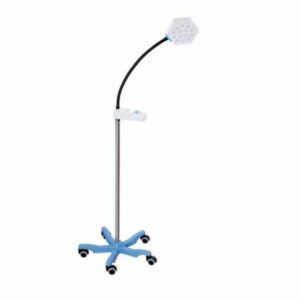 EH119 – Examination Light is a product of VNG Medical Innovation System Pvt. Ltd., which is a superior medical examination light designed to meet the exacting requirements of healthcare professionals. This advanced LED examination light offers exceptional illumination and user-friendly features, making it a dependable and efficient tool for medical examinations. The flexibility allows healthcare professionals to precisely focus on specific areas of interest, ensuring accurate examination and diagnosis. This eco-friendly feature contributes to reduced operational costs in healthcare facilities.
EH119 – Examination Light is a product of VNG Medical Innovation System Pvt. Ltd., which is a superior medical examination light designed to meet the exacting requirements of healthcare professionals. This advanced LED examination light offers exceptional illumination and user-friendly features, making it a dependable and efficient tool for medical examinations. The flexibility allows healthcare professionals to precisely focus on specific areas of interest, ensuring accurate examination and diagnosis. This eco-friendly feature contributes to reduced operational costs in healthcare facilities.
The accurate representation of the patient’s skin and tissues is essential for precise diagnosis and assessment in a medical setting. The intensity control feature allows users to adjust the brightness as per specific requirements, ensuring optimal illumination for a variety of examination procedures. This adaptability is a valuable asset in a medical setting where lighting needs can vary. Designed with mobility in mind, the EH119 Examination Light is equipped with a robust and flexible stand, allowing for easy movement and positioning in various examination rooms.
Nano Wall Mounted
Introducing Nano Wall Mounted by Balaji Surgical – the perfect lighting solution for small, crowded clinics seeking efficient illumination for medical procedures and examinations. Manufactured by Balaji Surgical, a prominent name in the medical equipment industry, Nano Wall Mounted combines innovation with space-saving design. This state-of-the-art device boasts a manual focusing system, making it an indispensable addition to any medical facility.
This system allows healthcare practitioners to adjust the light beam precisely, ensuring optimal illumination for various medical procedures and examinations. Whether it’s a minor surgical operation, a thorough medical checkup, or a diagnostic procedure, the ability to focus the light beam with precision is crucial for accurate and effective results. One of the primary advantages of the Wall-mounted Nano series examination lights is their space-saving design. In small and crowded clinics, space is often at a premium. These lights are specifically engineered to address this challenge. By being wall-mounted, they free up valuable floor space that can be utilized for other essential equipment or patient movement.
Spot Light
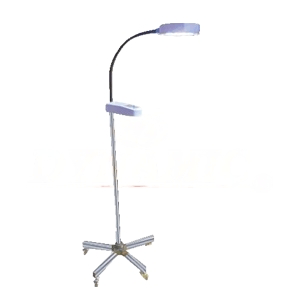 Introducing Spot Light, a cutting-edge medical illumination device manufactured by Dynamic International, a trusted leader in the field of examination lights. With its advanced features, including a digital controller, a heat-resistant plastic dome structure with a flexible arm, an impressive arm length of 750 mm, and 21 high-quality LEDs, Spot Light is poised to revolutionize the way medical professionals approach examinations and procedures.
Introducing Spot Light, a cutting-edge medical illumination device manufactured by Dynamic International, a trusted leader in the field of examination lights. With its advanced features, including a digital controller, a heat-resistant plastic dome structure with a flexible arm, an impressive arm length of 750 mm, and 21 high-quality LEDs, Spot Light is poised to revolutionize the way medical professionals approach examinations and procedures.
One of the standout features of Spot Light is its digital controller. This advanced controller allows medical practitioners to precisely adjust the intensity and focus of the light, catering to the specific requirements of different medical procedures and examinations. The digital controller ensures that healthcare professionals have complete control over the illumination, promoting accuracy and clarity in their work. The heat-proof plastic dome structure of Spot Light is a testament to its durability and safety. The dome is designed to withstand the rigors of a medical environment where heat can be a concern.
Hex Examination (Spot Light)
Introducing Hex Examination (Spot Light), the pinnacle of medical examination lights by Balaji Surgical, a distinguished manufacturer and global supplier of medical equipment. Hex Examination (Spot Light) boasts a powerful set of features that includes an intense 50,000 Lux illumination, 15 high-quality LEDs, a remarkable Colour Rendering Index of 95 Ra, and a fixed focusing facility. This advanced examination light is set to revolutionize the way medical professionals conduct examinations and procedures with unmatched precision and clarity. The standout feature of Hex Examination (Spot Light) is its remarkable intensity of 50,000 Lux. This level of illumination is essential for medical professionals who require optimal visibility during examinations and procedures. The powerful and consistent light output ensures that every detail is illuminated, allowing healthcare providers to make precise diagnoses and perform procedures with confidence.
Designed with 15 high-quality LEDs, Hex Examination (Spot Light) provides a bright, energy-efficient light source that enhances the clarity and precision of medical examinations. The LEDs offer uniform illumination, reducing shadows and providing a clear view of the area under examination.
Conclusion
Medical examination lights are more than just tools, they are a critical part of the healthcare ecosystem. Understanding the different types and their applications is essential for both medical professionals and those interested in the field. By making informed decisions and following best practices, we can ensure that the light of healthcare always shines bright.

